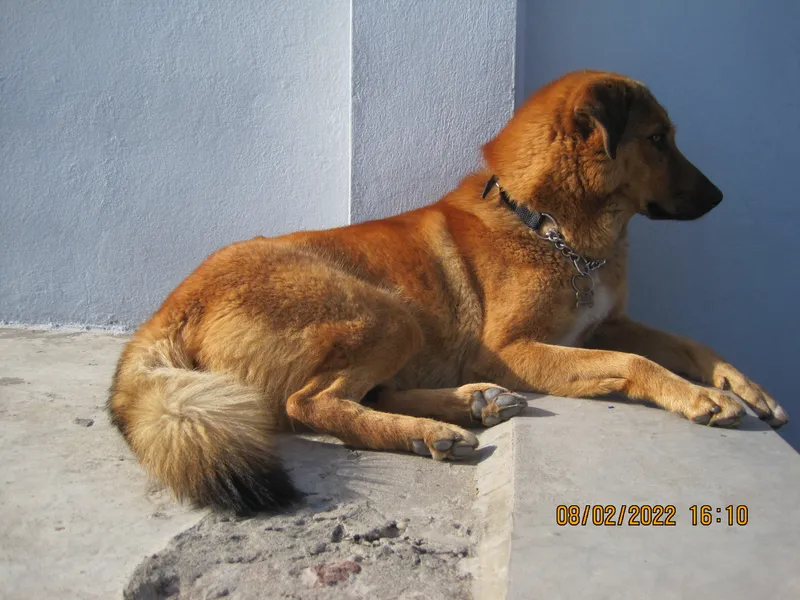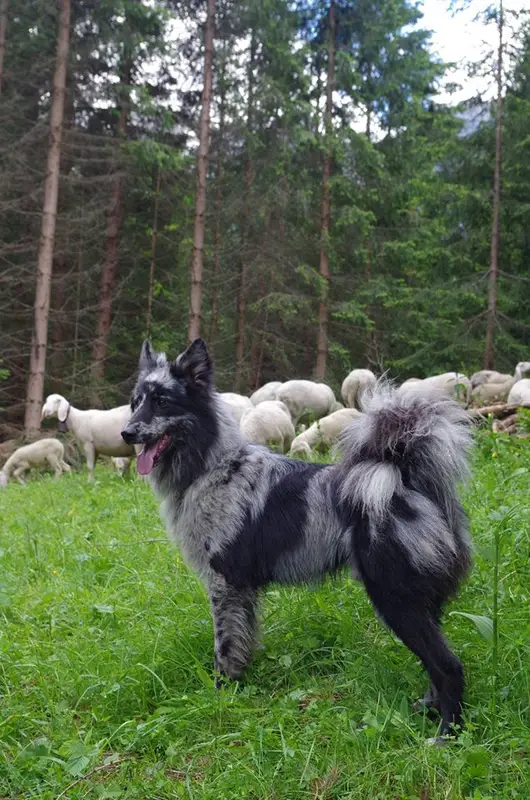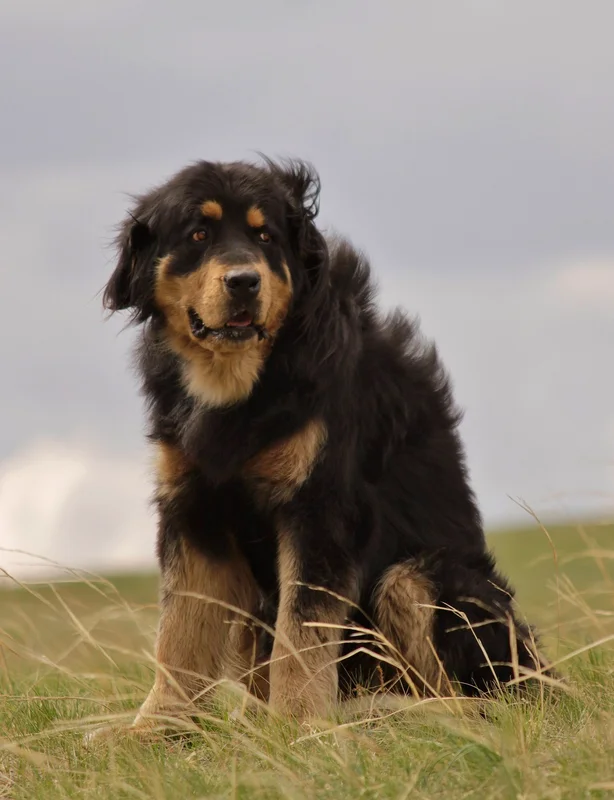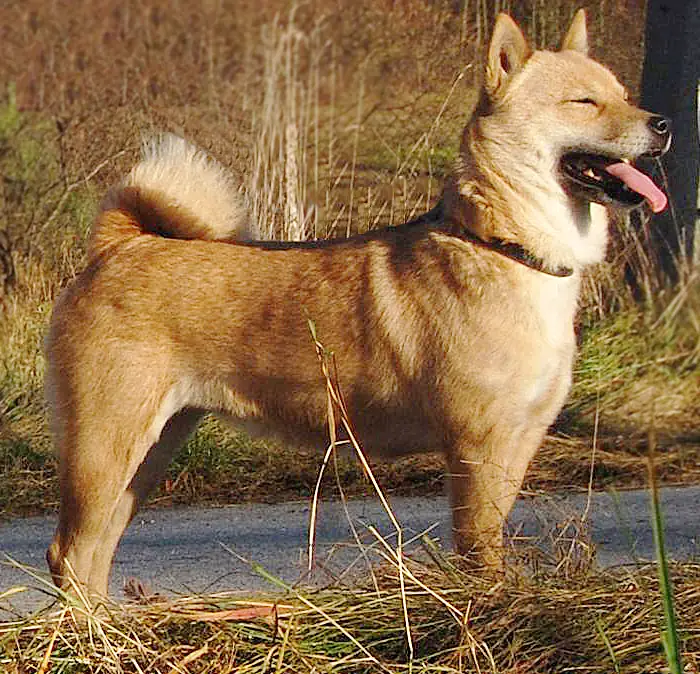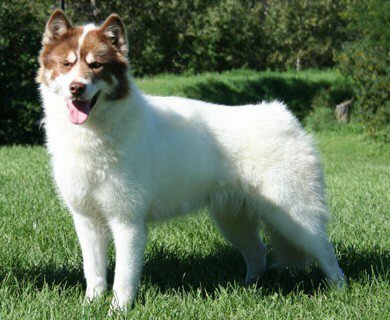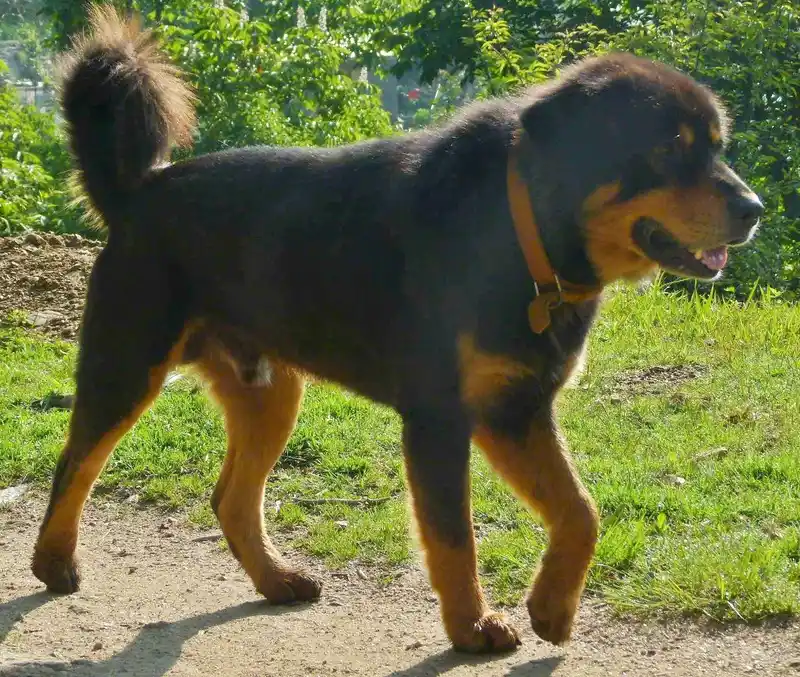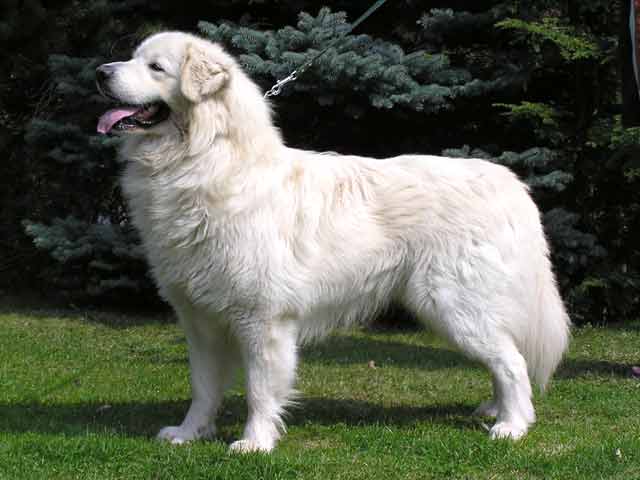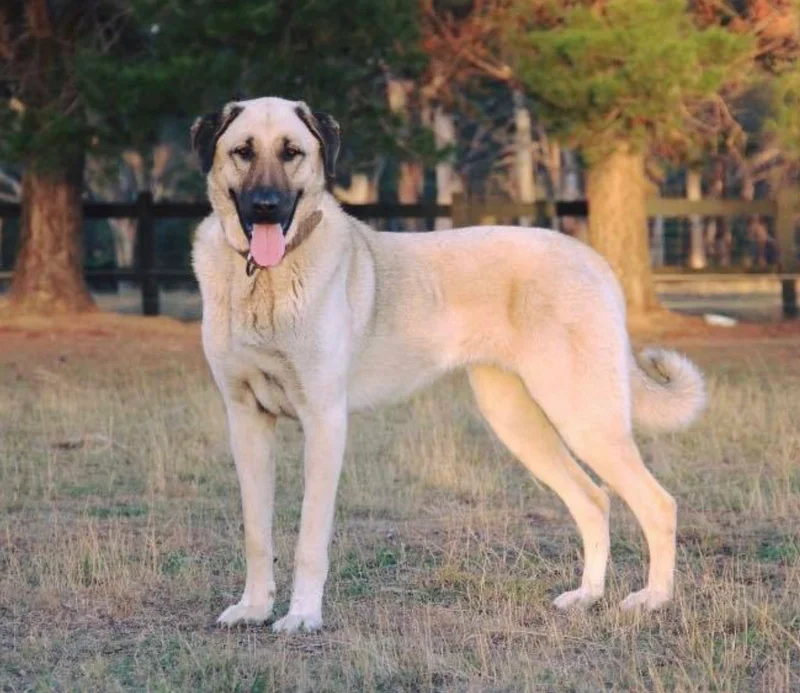Liangshan Dog
The Liangshan Dog, or Tibetan Mastiff, is a powerful guardian breed known for its loyalty and protective instincts. With a rich history and impressive stature, they require experienced ownership and ample exercise.
Overview
🐕Breed Overview
✨Key Traits
💡What Makes Liangshan Dog Special
One of the most defining traits of the Liangshan Dog is its strong protective instinct. This breed is naturally inclined to guard its family and territory, making it an excellent watchdog.
They are also known for their intelligence, which can be both a blessing and a challenge during training. Their independent nature means they often think for themselves, requiring owners to establish clear leadership.
Additionally, their loyalty to their families is unmatched, often leading them to be gentle and affectionate with children and other pets they are familiar with. However, they can be wary of strangers, necessitating proper socialization from a young age.
The Liangshan Dog, often referred to as the Tibetan Mastiff, is a majestic and powerful breed with a rich history rooted in the harsh terrains of Tibet and the Himalayas. Known for their impressive size and thick double coat, these dogs were originally bred by nomadic tribes to protect livestock from predators such as leopards and wolves. Their striking appearance, characterized by a broad head, strong build, and a thick mane-like ruff, makes them stand out in any setting.
Despite their imposing stature, Liangshan Dogs are known for their loyalty and protective instincts. They form strong bonds with their families and can be gentle and affectionate with those they trust. However, their natural guarding instincts mean they can be wary of strangers, making early socialization and training essential.
Living with a Liangshan Dog requires commitment, as they thrive in spacious environments where they can roam and explore. Daily exercise is crucial to keep them physically and mentally stimulated, with at least 60 to 90 minutes of activity recommended. While they can adapt to various living situations, they are not well-suited for apartment living due to their size and exercise needs.
Training a Liangshan Dog can be challenging due to their independent nature, but with consistent, positive reinforcement methods, they can learn to follow commands and behave well. Their intelligence and strong work drive mean they excel in activities that engage their minds, such as obedience training and dog sports. Health-wise, the Liangshan Dog has a longer lifespan compared to many large breeds, typically living between 10 to 14 years.
While they are generally healthy, potential owners should be aware of common health issues such as hypothyroidism and skin problems. Regular veterinary check-ups and a balanced diet are essential for maintaining their health. In summary, the Liangshan Dog is a remarkable breed that requires experienced ownership and a commitment to training and socialization.
With the right environment and care, they can be loyal companions and effective guardians, making them a unique addition to any family.
🎉Fun Facts
The Liangshan Dog is known for its impressive size, with males reaching heights of up to 33 inches.
They have a unique vocalization style, often barking to alert their owners of any potential threats.
This breed is known for its strong guarding instincts, making them excellent protectors of livestock and property.
Breed Characteristics
Family & Friends
Good Behavior
Get Up & Go
Household Harmony
Temperament & Personality
✨Key Traits
🐕Core Temperament
The Liangshan Dog possesses a temperament that is both protective and loyal. They are known to be affectionate with their families, often forming strong bonds with children and other pets they are raised with.
However, their natural guarding instincts can make them wary of strangers, requiring early socialization to ensure they are comfortable in various situations. This breed is intelligent and independent, which can lead to challenges in training, as they may not always comply with commands.
Their strong-willed nature means that owners must establish themselves as confident leaders to gain their respect and cooperation.
💫Personality Profile
The Liangshan Dog is a breed characterized by its loyalty and protective nature. They are known to form strong bonds with their families and can be affectionate with those they trust.
However, their independent streak means they may not always follow commands without question. They are generally reserved around strangers, making early socialization essential to help them become well-adjusted companions.
Their intelligence allows them to learn quickly, but their stubbornness can pose challenges during training. Overall, they thrive in environments where they can exercise their natural guarding instincts while being part of a loving family.
🔊Vocal Tendencies
The Liangshan Dog is known for its vocal nature, often barking to alert its owners of any perceived threats. They may bark at strangers approaching their territory or during nighttime when they are most active.
While their barking serves as a protective measure, it can become excessive if not properly managed through training and socialization. Owners should be prepared for a dog that will communicate its presence vocally, especially in response to unfamiliar sounds or sights.
Their vocalizations can vary from deep barks to more alert sounds, depending on the situation.
Affection & Social Traits
Energy & Activity
Communication Style
Care Requirements
🏃♂️Exercise Requirements
Daily Exercise
The Liangshan Dog, also known as the Tibetan Mastiff, requires a significant amount of exercise to maintain its physical and mental well-being. Ideally, an adult Liangshan Dog should engage in at least 60 to 90 minutes of exercise daily.
This can include activities such as long walks, running, playing fetch, or engaging in dog sports like agility or obedience training. Puppies may require shorter, more frequent sessions to accommodate their developing bodies, while senior dogs may benefit from gentler activities to avoid strain.
Regular exercise helps manage weight, supports cardiovascular health, and reduces behavioral issues stemming from boredom or pent-up energy. Insufficient exercise can lead to weight gain, destructive behaviors, and increased anxiety or aggression.
Preferred Activities
🏠Living & Adaptability
Space Requirements
The Liangshan Dog thrives in environments with ample space to roam and explore. Ideally, they should have access to a large, securely fenced yard where they can run freely.
While they can adapt to living in a house with a small yard, they may require more frequent outings to fulfill their exercise needs. Apartment living is generally not suitable for this breed due to their size and exercise requirements.
Owners in smaller living situations should ensure they can provide sufficient daily exercise and mental stimulation to prevent boredom and potential behavioral issues.
Climate Preference
🍲Feeding Guide
Schedule
Food Types
Portion Size
Special Nutritional Needs
Liangshan Dogs require a balanced diet rich in protein to support their muscular build. It's important to choose high-quality dog food that meets their nutritional needs.
Some dogs may have food sensitivities, so monitoring their reactions to different foods is crucial. Regular veterinary check-ups can help determine if any supplements, such as omega fatty acids for skin health or glucosamine for joint support, are necessary.
✨Grooming Requirements
Grooming Overview
The Liangshan Dog has a thick double coat that requires regular grooming to keep it healthy and free of mats. During shedding seasons, typically in spring and fall, they may require more frequent brushing—ideally every other day—to manage loose hair.
A slicker brush or undercoat rake is recommended for effective grooming. Bathing should be done as needed, usually every few months, to avoid stripping the coat of its natural oils.
Regular nail trimming and dental care are also important to maintain overall health.
Care Schedule
Brush 2-3 times a week; bathe every 2-3 months; trim nails every 2-4 weeks.
Health Profile
⚕️Health Care
Regular health care is crucial for the Liangshan Dog's longevity. Routine veterinary check-ups, vaccinations, and preventive treatments can help detect health issues early and maintain overall health.
Owners should establish a health care routine that includes regular dental care, parasite prevention, and monitoring for any signs of illness. Early detection and treatment of health issues can significantly improve the quality of life and lifespan of this breed.
Health Issues Overview
⏳Average Lifespan
Genetic Factors
Genetics play a significant role in the Liangshan Dog's lifespan, with certain hereditary health issues affecting some lines more than others. Responsible breeding practices that prioritize genetic diversity can help reduce the risk of inherited conditions.
Potential owners should seek out reputable breeders who conduct health testing on their breeding stock to minimize the likelihood of genetic health problems. Understanding the genetic background of a dog can provide insights into potential health risks and inform owners about the best care practices for their specific dog.
Living Conditions
The Liangshan Dog's lifespan can be influenced by various environmental factors, including housing conditions, climate, and social interactions. Dogs living in spacious, secure environments with access to outdoor activities tend to live longer, healthier lives.
Exposure to harsh weather conditions without adequate shelter can negatively impact their health. Regular social interactions with family members and other dogs can also contribute to their overall well-being, reducing stress and anxiety.
Owners should ensure a balanced lifestyle that includes physical exercise, mental stimulation, and socialization to promote longevity.
🏥Common Health Issues
Hypothyroidism
Warning Signs
🔬Diagnosis
Blood tests to assess thyroid hormone levels.
💊Treatment
Thyroid hormone replacement therapy.
📝Management Tips
Regular veterinary check-ups and monitoring thyroid levels; medication may be necessary for symptomatic dogs.
Entropion
Warning Signs
🔬Diagnosis
Veterinary examination of the eyelids.
💊Treatment
Surgery to correct eyelid position.
📝Management Tips
Surgical correction may be required; regular eye check-ups.
Skin allergies
Warning Signs
🔬Diagnosis
Allergy testing and skin examinations.
💊Treatment
Medications and topical treatments to manage symptoms.
📝Management Tips
Identify and eliminate allergens; consider hypoallergenic diets.
🛡️Preventive Care
🔬Thyroid Evaluation
A comprehensive thyroid panel to assess thyroid function, crucial for detecting hypothyroidism.
📅 Annually after the age of 2 years.
🔬Ophthalmic Examination
An eye examination to check for common issues such as entropion or other hereditary eye conditions.
📅 Every 1-2 years, or as recommended by a veterinarian.
🔬Allergy Testing
A skin allergy test to identify potential allergens affecting the dog's skin health.
📅 As needed, based on symptoms or veterinary recommendation.
Training
🧠Intelligence & Trainability
💪Work Drive
The Liangshan Dog has a strong work drive, stemming from its historical role as a guardian. These dogs thrive when given tasks or jobs to do, whether it's protecting livestock, participating in dog sports, or engaging in training exercises.
Providing mental stimulation through interactive games, training sessions, and problem-solving activities is essential for their well-being. Without sufficient engagement, they may become bored and exhibit destructive behaviors.
Owners should aim to incorporate a variety of activities into their routine to keep their Liangshan Dog happy and fulfilled.
⚠️Training Considerations
Training a Liangshan Dog can present challenges due to their independent and strong-willed nature. Common behavioral challenges include stubbornness, a tendency to assert dominance, and a natural inclination to be wary of strangers.
To overcome these challenges, consistent and firm training methods are essential. Positive reinforcement techniques, such as treats and praise, can be effective in motivating the dog.
Early socialization is crucial to help them become comfortable with various people, environments, and other animals. Owners should be prepared for a training process that may require patience and persistence, as these dogs often think for themselves and may resist commands they do not see the value in.
📝Training Tips
To effectively train a Liangshan Dog, start with basic obedience commands such as sit, stay, and come. Use positive reinforcement techniques, rewarding desired behaviors with treats and praise.
Consistency is key; establish a routine for training sessions and stick to it. Socialization should begin early, exposing the dog to different environments, people, and other animals to reduce their natural wariness.
Engaging in activities that challenge their intelligence, such as puzzle toys or obedience classes, can help keep them mentally stimulated. Remember to be patient and understanding, as this breed may take longer to learn than others due to their independent nature.
History & Heritage
📜Origin Story
The Liangshan Dog, or Tibetan Mastiff, is believed to have originated in the high-altitude regions of Tibet, where it was bred by nomadic tribes for its exceptional guarding abilities. These dogs were essential for protecting herds of sheep and goats from large predators, including leopards and wolves.
The breed's name, Dok-Khyi, translates to 'nomad dog,' reflecting its role in the lives of the nomadic people. As trade routes opened and interactions with other cultures increased, the Tibetan Mastiff spread to neighboring regions, including Nepal and northern India.
Its impressive stature and protective instincts made it a sought-after companion for both nomads and settled communities. Throughout history, the breed has been celebrated in Tibetan culture, often depicted in art and literature as a symbol of strength and loyalty.
⏳Development History
The Liangshan Dog's history dates back thousands of years, with its ancestors believed to have accompanied nomadic tribes across the Himalayan region. Initially bred for their guarding instincts, these dogs were essential for protecting livestock from predators.
Over time, selective breeding led to the development of two distinct types: the Do-Khyi, known for its agility and adaptability, and the Tsang-Khyi, which is larger and more robust. The breed's characteristics have been shaped by the harsh environments of Tibet, resulting in a hardy dog capable of thriving in extreme conditions.
Despite its ancient roots, the breed has seen a resurgence in popularity in recent decades, leading to increased breeding efforts and recognition by various kennel clubs.
🛡️Purpose & Historical Role
Historically, the Liangshan Dog served as a livestock guardian, protecting herds from predators and intruders. Its role extended beyond mere protection; these dogs were also companions to nomadic families, providing warmth and security in harsh environments.
In monasteries, they were revered as protectors of sacred spaces, showcasing their loyalty and intelligence. Today, while still used for guarding livestock, the breed has also found a place as a family companion, although their strong guarding instincts require experienced ownership.
🏺Cultural Significance
The Liangshan Dog, or Tibetan Mastiff, holds a significant place in the cultures of Tibet, Nepal, and northern India, where it has been revered for centuries as a guardian of livestock and property. Its historical role as a protector against predators like leopards and wolves has made it a vital asset for nomadic tribes and settled communities alike.
The breed's presence in folklore and art underscores its importance, symbolizing strength, loyalty, and resilience. In modern times, the Tibetan Mastiff has gained popularity worldwide, often featured in media and as a status symbol among dog enthusiasts, further solidifying its cultural significance.
Conservation Status
This breed is less common but has stable populations in certain regions.
